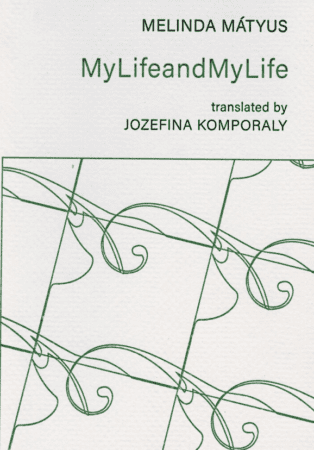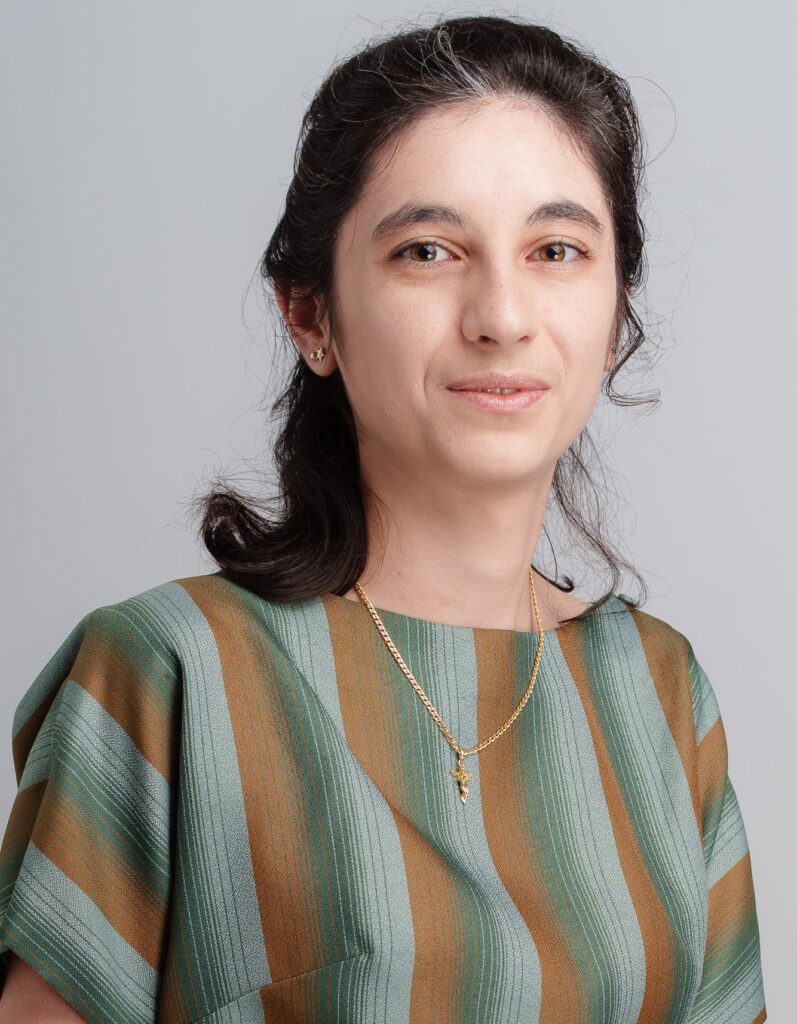Review: MyLifeandMyLife

| Author | Melinda Mátyus |
| Genre | Fiction |
| ISBN | 978-1-946604-19-4 |
| Format | 140 pages |
| Language | English |
| Publisher | Ugly Duckling Presse |
Reviewed by Amanda L. Andrei
American poet Emily Dickinson once wrote to a family friend, “The heart wants what it wants – or else it does not care.” Her observation is apt for the stark and bold world of MyLifeandMyLife by Melinda Mátyus. Translated from the Hungarian by Jozefina Komporaly, this experimental novella from the perspective of a nameless woman in a fraught relationship pushes the boundaries of language by expressing the pressure and violence of doomed love.
The unnamed narrator becomes involved with a man named Márton who – despite their sexual relationship – she comes to know less and less. She meets him at movies, but they do not touch. For this woman, love is tantamount to the simplest of gestures, and her words cluster together as if whispered or sighed:
“Hold my hand.
I’dliketoholdyourhand, your hand, I’d like your hand.
I don’t have the courage to utter this.
I’d like my left hand to be in his right hand, so he can touch me with his fingers, first the middle of my palm, then the back of my hand, my wrist, and we canjustwalkandwalk, from one house to another, on and on, then turn around, and around again, cross to the other side, or stay on this side, our side.
To have my lefthandinyourrighthand, that’s what I’d like.” (Mátyus, 15)
Yet her wishes remain unfulfilled. Simplicity is overtaken by excess–in the form of art. In a series of power plays, Márton gifts the narrator expensive paintings that pierce her soul but further separate any semblance of emotional intimacy. “What kind of a world is the one where women fall in love and end up on their own?” she wonders (Mátyus, 16).
It’s a world full of off-colors and uncanny symbols in the artworks, such as blood spurting from a bride and a “whitewashedgrave” (Mátyus, 27). Over the course of a few years, the narrator receives four paintings: Bride’s Door by Helen Frankenthaler, Monitor by Robert Ryman, Running White by Ellsworth Kelly, and Self-Portrait by Paula Modersohn-Becker. It’s notable that the first three paintings are by American abstract artists, while the latter is by a German expressionist painter who was the first woman artist to paint a nude self-portrait (and who died suddenly due to childbirth complications).
The narrator realizes that with these paintings, “Márton is always sending me messages about love because he is incapable of talking about it” (Mátyus, 37). With contempt, she scratches them (her “signature”) with a red stiletto, a small vent of frustration against male expectations of female domesticity and sexuality. Although the final portrait activates her own self-recognition, her lover senses his loss of control, not only over the materiality of his gifts, but over her personhood. The confrontation is as chilling as the narrator’s interpretations of the paintings.
Komporaly’s translation renders a sense of fragility and powerlessness into a character who is wrestling with her contempt and the destructive mystery of eros. Komporaly’s translator’s note and András Visky’s afterword provide additional context to Mátyus’s work, noting the influence of theater and similarities to ancient tragedy. Indeed, with her flowing sentences and huddled words, the novella reads as a stage script for a poetically heightened solo show. It is not hard to imagine watching the narrator as a live actor testifying her innermost secrets, her quotidian observations, and her imminent despair. In a world where women fall in love and end up on their own, it is only their own words that will bear witness to their agony.

Ioana Bîrjan (b.1997) is the author of Vârsta Iubirii which translates into English as The Age of Love (Heyday Books, 2023). The novel is inspired by the Lady of the Camellias and the opera La traviata. She earned a bachelor’s degree from the Faculty of Letters, Ovidius University of Constanța, where she is now a graduate student in the Romanian Studies program.
Read more of her work in magazines, in anthologies, and on her blog: https://scrierileioanei.wordpress.com/
SUPPORT SEEFEST
Not a member yet? Become an art patron with other SEEfest arthouse aficionados in support of great events and programs. Our mission is to keep you informed about initiatives from our wide network of fellow cultural organizations.
We Welcome YOU!

